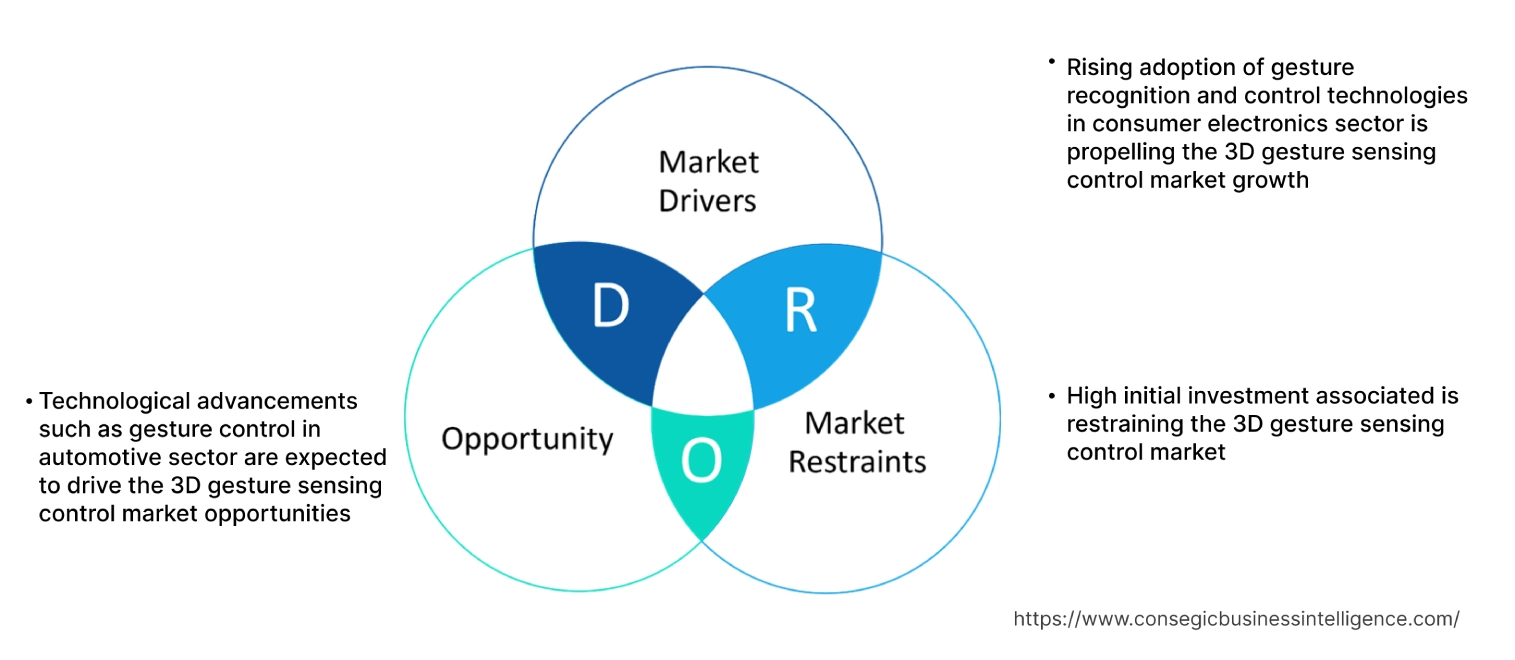- Summary
- Table Of Content
- Methodology
3D Gesture Sensing Control Market Size:
3D Gesture Sensing Control Market size is estimated to reach over USD 44.91 Billion by 2032 from a value of USD 10.45 Billion in 2024 and is projected to grow by USD 12.36 Billion in 2025, growing at a CAGR of 22.5% from 2025 to 2032.
3D Gesture Sensing Control Market Scope & Overview:
3D gesture sensing control refers to a technology that enables users to interact with electronic devices through natural hand or body movements. 3D gesture sensing control solution utilizes various sensors for detecting, tracking, and interpreting gestures for executing commands without the need for physical contact. Moreover, 3D gesture control solutions offer a range of benefits such as intuitive interaction, enhanced accessibility, improved hygiene control, and others. The above benefits of 3D gesture control solutions are primary determinants for increasing its utilization in consumer electronics, automotive, healthcare, and other sectors.
Key Drivers:
Rising adoption of gesture recognition and control technologies in consumer electronics sector is propelling the 3D gesture sensing control market growth
The consumer electronics sector is witnessing substantial advancements associated with the integration of 3D gesture recognition and control technologies in electronic devices. 3D gesture recognition and control technologies are primarily integrated in consumer electronics devices such as smartphones, tablets, wearables, smart home devices, and others for facilitating contact-free navigation, control, and gesture-based commands to perform specific tasks.
- For instance, in November 2024, Huawei Technologies launched its new Mate 70 series smartphones, which offers new features such as gesture controlled file transfer, improved user interface, and others. The gesture controlled file transfer can be activated by using palm-to-fist grab gesture.
Hence, the rising adoption of gesture recognition and gesture control technologies in consumer electronics devices is proliferating the 3D gesture sensing control market size.
Key Restraints:
High initial investment associated is restraining the 3D gesture sensing control market
High initial investment associated with development and integration of 3D gesture sensing control solutions is among the key factors limiting the market. The upfront costs associated with developing 3D gesture control solutions including costs of equipment, hardware, software, and others along with integrating them into existing systems can be significantly high, which may cause financial barriers, specifically for smaller businesses or businesses operating on tighter budgets.
Additionally, 3D gesture control solutions can be quite complex to install and integrate, which further necessitates additional expenses on training personnel or hiring specialized experts for integrating the systems effectively. Thus, high initial investments associated with development and integration of 3D gesture control solutions are hindering the 3D gesture sensing control market expansion.
Future Opportunities :
Technological advancements such as gesture control in automotive sector are expected to drive the 3D gesture sensing control market opportunities
The ongoing advancements associated with the integration of 3D gesture control technology in automotive sector, particularly in premium cars, for improving user interaction with vehicle systems, enhancing safety, and improving overall driving experience is providing lucrative aspects for market growth. Moreover, 3D gesture control can be integrated in automotive infotainment systems to facilitate touch-free navigation, which enables drivers to control infotainment systems and access music, navigation, and call functions by using hand gestures without the need to touch physical buttons or screens.
- For instance, in 2020, DS Automobile launched the DS Aero Sport Lounge series of premium car, which features gesture control and hand tracking technology developed by Ultraleap. The technology interprets hand gestures, which enables the driver or passengers to control a wide range of systems, including the vehicle’s entertainment and navigation systems.
Hence, as per the analysis, the ongoing advancements associated with the integration of 3D gesture control technology in automotive sector are further projected to boost the 3D gesture sensing control market opportunities during the forecast period.
3D Gesture Sensing Control Market Segmental Analysis :
By Component:
Based on component, the market is segmented into hardware, software, and services.
Trends in the component:
- Increasing technological advancements associated with 3D gesture control hardware components such as sensors, processors, controllers and others.
- There is a rising trend towards utilization of technologies such as machine learning, computer vision, and pattern recognition among others, to enable real time gesture recognition and control.
The hardware segment accounted for a largest revenue share of 61.38% in the total 3D gesture sensing control market share in 2024.
- The primary hardware components used in 3D gesture control solutions include sensors, processors, controllers, connectivity modules, and others.
- Moreover, sensors are mainly used for detecting orientation and motion in order to facilitate to gesture recognition, tracking, and detection.
- Meanwhile, controllers are used for processing raw data captured by sensors and cameras to enable gesture recognition in real-time.
- For instance, Microchip Technology Inc. offers MGC3030 model of gesture recognition and detection controller in its product offerings. The controller enables 3D input sensing in a wide range of applications such as consumer electronic devices, lighting control, medical applications, and others.
- According to the 3D gesture sensing control market analysis, the rising advancements associated with 3D gesture control hardware solutions are driving the 3D gesture sensing control market trends.
The software segment is anticipated to register a significant CAGR growth during the forecast period.
- The software segment primarily includes gesture recognition algorithms, development frameworks, SDKs (software development kits), and others.
- Moreover, gesture recognition algorithms process the data from hardware inputs for identifying specific gestures.
- Additionally, the primary gesture recognition techniques include computer vision, machine learning, and pattern recognition among others. These techniques facilitate real time gesture recognition and control.
- For instance, GestureTek offers GestTrack3D SDK in its product portfolio, the company’s patented 3D gesture control software. The software enables users to control interactive displays and digital signs from a distance with full body and hand gestures.
- Thus, rising advancements related to 3D gesture control software are anticipated to boost the 3D gesture sensing control market trends during the forecast period.
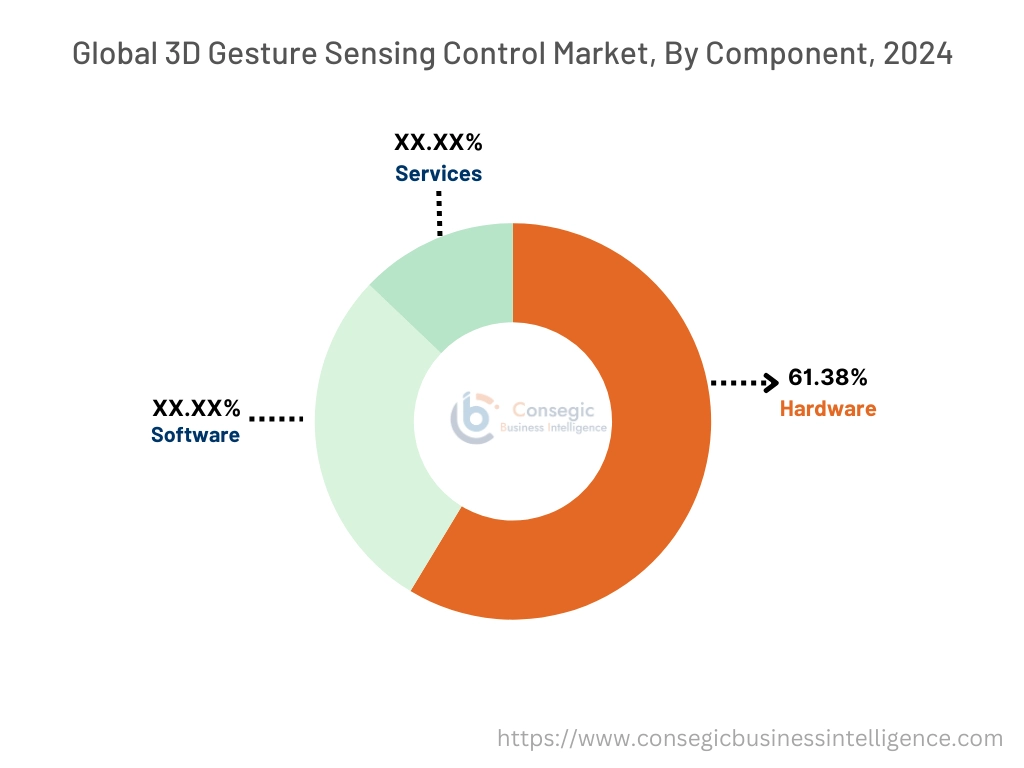
By Technology:
Based on technology, the market is segmented into infrared, ultrasonic, radar, computer vision, and others.
Trends in the technology:
- Rising trend towards adoption of computer vision technology for gesture recognition and tracking, due to its improved data acquisition capability.
- Increasing integration of infrared technology for depth sensing and gesture detection, attributing to several benefits such as high precision, accuracy, and improved performance in various lighting conditions.
The computer vision segment accounted for a significant revenue in the overall market in 2024.
- Computer vision technology enables systems to track hand movements, body posture, and gestures by processing video input in real-time.
- In computer vision technology, algorithms analyze image frames for detecting features such as shapes, edges, and movements that correspond to particular gestures.
- For instance, Pranathi Software Services Pvt. Ltd. developed and implemented a hand gesture detection system with computer vision technology for redefining human-computer interaction. The hand gesture detection system with computer vision provided several benefits including increased convenience and accessibility, along with intuitive, immersive, and elevated user experience.
- Therefore, increasing advancements associated with computer vision technology-based 3D gesture recognition and control solutions are driving the 3D gesture sensing control market growth.
The infrared segment is anticipated to register a substantial CAGR growth during the forecast period.
- Infrared (IR) technology utilizes infrared light for detecting and measuring objects and movements.
- In 3D gesture control applications, infrared technology mainly utilizes sensors that emit and detect IR light for creating depth maps or identifying user movements.
- Moreover, infrared technology is capable of detecting motion based on variations in the IR light reflected off a user's hands or body, which enables the system to recognize particular gestures without interference from ambient light.
- Additionally, the utilization of infrared technology in depth sensing and gesture detection offers numerous benefits such as high precision, accuracy, and improved performance in various lighting conditions among others.
- Hence, the above benefits of infrared technology are projected to increase its utilization for 3D gesture control solutions, in turn propelling the 3D gesture sensing control market size during the forecast period.
By End-Use:
Based on the end-use, the market is segmented into consumer electronics, automotive, healthcare, gaming, and others.
Trends in the end-use:
- Factors such as increasing adoption of smartphones, tablets, and other consumer devices, advancements in consumer electronics, and rising popularity of wearable devices are propelling the growth of the consumer electronics segment.
- Factors including rising automobile production, growing popularity of luxury/premium vehicles, and increasing trend of EV adoption are driving the automotive segment.
Consumer electronics segment accounted for the largest revenue share in the overall 3D gesture sensing control market share in 2024
- 3D gesture recognition and control solutions are primarily integrated in consumer electronics devices such as smartphones, tablets, wearables, smart home devices, and others.
- The integration of 3D gesture control solutions in aforementioned consumer electronics devices facilitates contact-free navigation, control, and gesture-based commands to perform specific tasks.
- For instance, in March 2024, Realme launched its new Narzo 70 Pro series smartphone, which features air gestures to enable touchless controls and seamless interaction experience. The gesture control enables users to complete most of the essential smartphone operations without by simply waving their hand.
- According to the analysis, the increasing adoption of gesture control technologies in consumer electronics devices is propelling the market demand.
Automotive segment is anticipated to register a substantial CAGR growth during the forecast period.
- 3D gesture control technology is primarily used in automotive sector, particularly in premium cars, for improving user interaction with vehicle systems, enhancing safety, and improving overall driving experience.
- Moreover, 3D gesture control is usually integrated in automotive infotainment systems to facilitate touch-free navigation, which enables drivers to control infotainment systems and access music, navigation, and call functions by utilizing hand gestures while eliminating the need to touch physical buttons or screens.
- For instance, BMW AG is an automobile manufacturer that introduced gesture control technology in its BMW 7 Series, marking a significant development in intuitive vehicle interaction.
- Therefore, the ongoing advancements associated with the integration of 3D gesture control technology in automotive sector are projected to drive the market demand during the forecast period.
Regional Analysis:
The regions covered are North America, Europe, Asia Pacific, the Middle East and Africa, and Latin America.
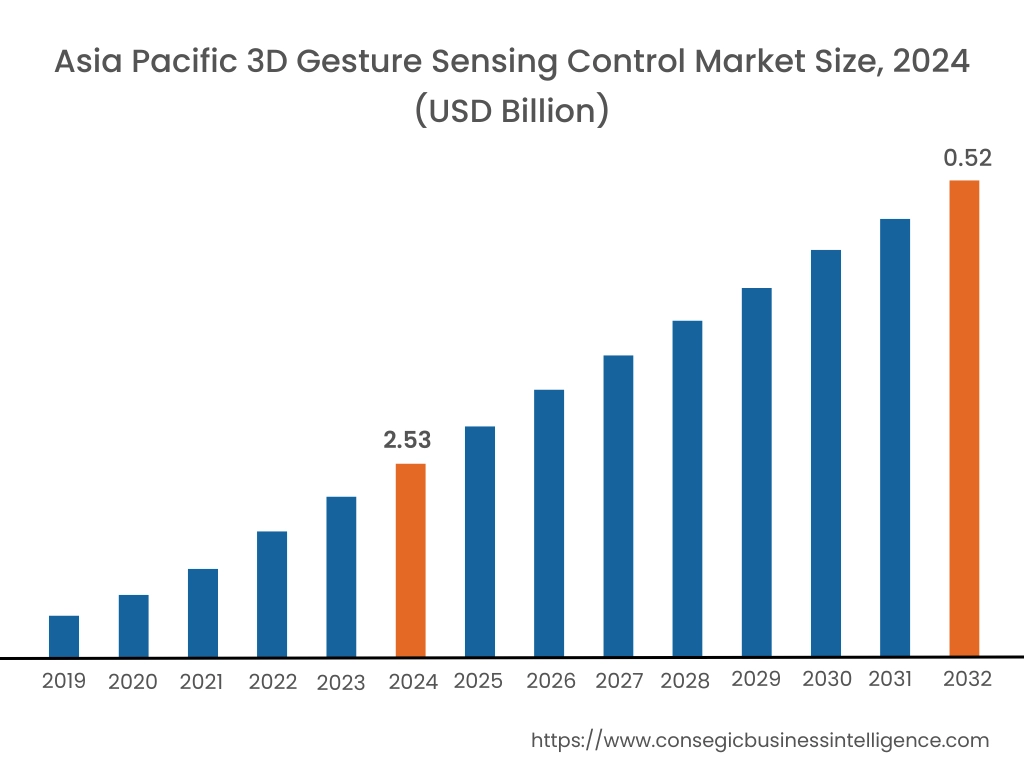
Asia Pacific region was valued at USD 2.53 Billion in 2024. Moreover, it is projected to grow by USD 3.00 Billion in 2025 and reach over USD 11.32 Billion by 2032. Out of this, China accounted for the maximum revenue share of 33.17%. As per the 3D gesture sensing control market analysis, the adoption of 3D gesture control solutions in the Asia-Pacific region is primarily driven by growing automotive, consumer electronics, and gaming sectors among others. Additionally, the rising adoption of 3D gesture control solutions in automotive industry, particularly in premium cars to facilitate touch-free navigation and control of infotainment system, is further accelerating the 3D gesture sensing control market expansion.
- For instance, BMW Group India, a premium car manufacturer, recorded an annual vehicle sales of 15,721 units in 2024, witnessing an increase of 11% from 14,172 units in 2023. BMW cars are often integrated with gesture control technology to facilitate seamless vehicle interaction. Thus, the above factors are propelling the market in the Asia-Pacific region.
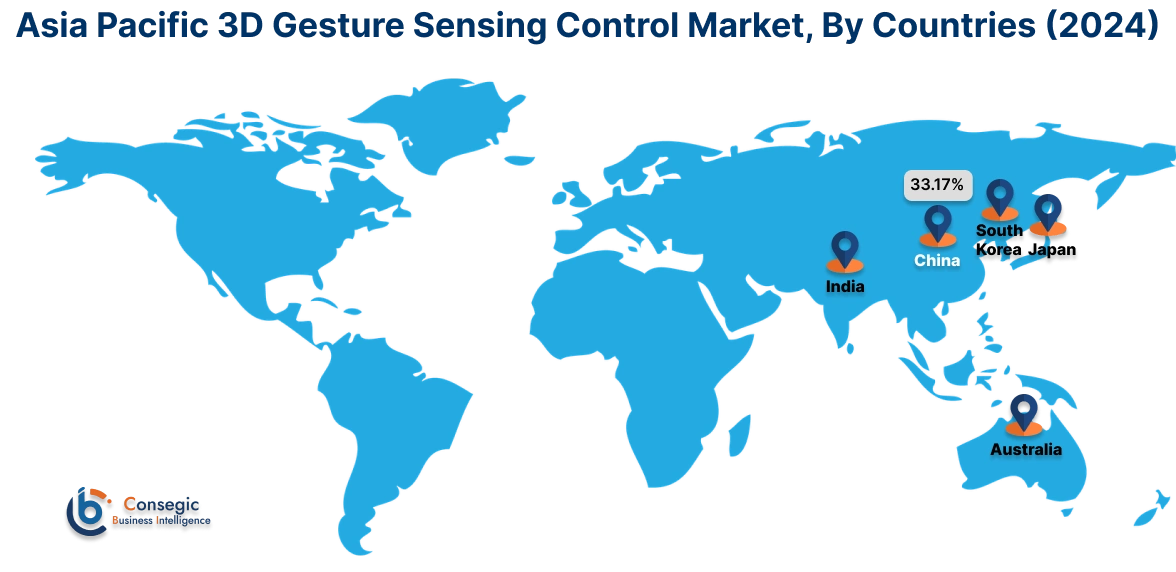
North America is estimated to reach over USD 17.02 Billion by 2032 from a value of USD 4.03 Billion in 2024 and is projected to grow by USD 4.76 Billion in 2025. In North America, the growth of 3D gesture sensing control industry is driven by rising investments in consumer electronics, healthcare, automotive and other sectors. Similarly, rising advancements in augmented reality (AR) and increasing development of consumer electronic with advanced gesture controls are further contributing to the 3D gesture sensing control market demand.
- For instance, in March 2022, NuEyes, a U.S-based company specializing in the field of AR smart glass technology, partnered with ManoMotion, a global company specializing in hand tracking and gestures. The partnership will enable the company to rapidly develop AR applications on the NuEyes Pro3 smart glasses product line, by integrating ManoMotion's hand tracking and gesture technology. The above factors are expected to drive the market in North America during the forecast period.
Additionally, the regional analysis depicts that the growing healthcare and automotive sectors, rising adoption of smart home devices, along with increasing adoption of gesture control solutions in aforementioned industries to facilitate touch-free operations are driving the 3D gesture sensing control market demand in Europe. Furthermore, as per the market analysis, the market demand in Latin America, Middle East, and African regions is expected to grow at a considerable rate due to factors such as rising pace of industrialization and increasing investments for integration of 3D gesture control solutions in consumer electronics and automotive sectors among others.
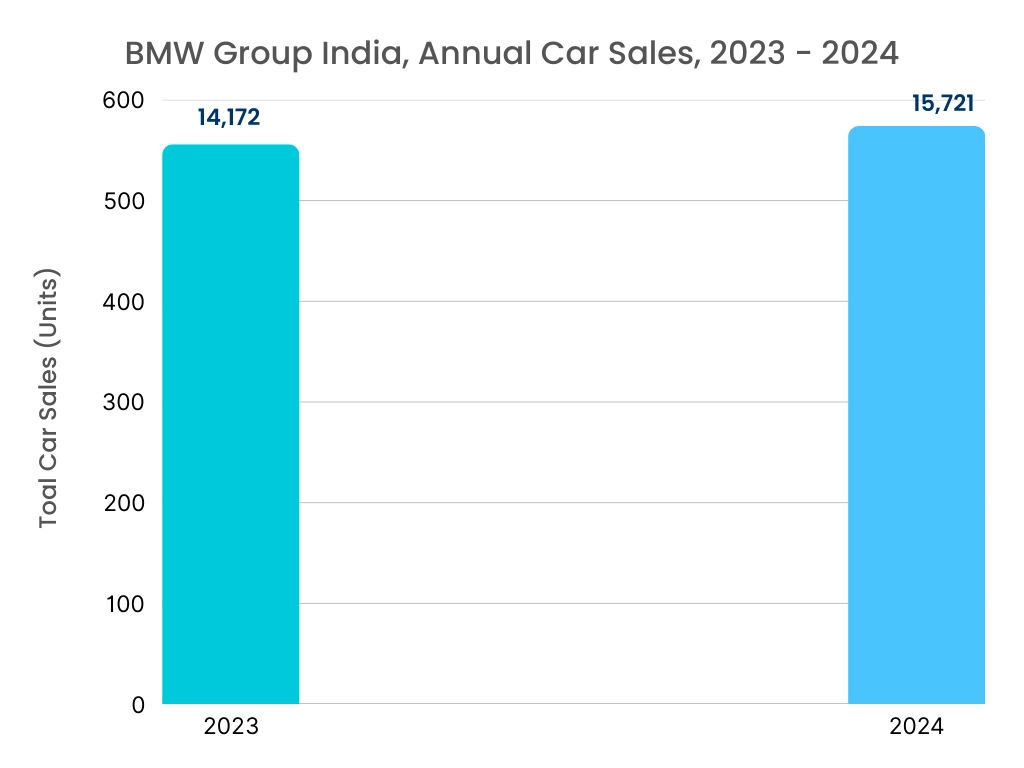
Top Key Players and Market Share Insights:
The global 3D gesture sensing control market is highly competitive with major players providing solutions to the national and international markets. Key players are adopting several strategies in research and development (R&D), product innovation, and end-user launches to hold a strong position in the 3D gesture sensing control market. Key players in the 3D gesture sensing control industry include-
- Intel Corporation (U.S)
- Microchip Technology Inc. (U.S)
- STMicroelectronics N.V. (Switzerland)
- Texas Instruments Incorporated (U.S)
- Microsoft Corporation (U.S)
- Apple Inc. (U.S)
- Infineon Technologies AG (Germany)
- XYZ Interactive Technologies Inc. (Canada)
- GestureTek Technologies (U.S)
- Elliptic Labs ASA (Norway)
Recent Industry Developments :
Product Launch:
- In January 2022, New Vision Display introduced its 3D Gesture Touch sensor feature, which is based on the patented GestIC technology from Microchip Technology. The solution enables users to interact with a system by utilizing simple hand gestures at a short distance from the screen without any physical contact. The solution is ideal for application in smart home electronics, automotive infotainment, medical devices, and others.
3D Gesture Sensing Control Market Report Insights :
| Report Attributes | Report Details |
| Study Timeline | 2019-2032 |
| Market Size in 2032 | USD 44.91 Billion |
| CAGR (2025-2032) | 22.5% |
| By Component |
|
| By Technology |
|
| By End-Use |
|
| By Region |
|
| Key Players |
|
| North America | U.S. Canada Mexico |
| Europe | U.K. Germany France Spain Italy Russia Benelux Rest of Europe |
| APAC | China South Korea Japan India Australia ASEAN Rest of Asia-Pacific |
| Middle East and Africa | GCC Turkey South Africa Rest of MEA |
| LATAM | Brazil Argentina Chile Rest of LATAM |
| Report Coverage |
|
Key Questions Answered in the Report
How big is the 3D gesture sensing control market? +
The 3D gesture sensing control market was valued at USD 10.45 Billion in 2024 and is projected to grow to USD 44.91 Billion by 2032.
Which is the fastest-growing region in the 3D gesture sensing control market? +
Asia-Pacific is the region experiencing the most rapid growth in the 3D gesture sensing control market.
What specific segmentation details are covered in the 3D gesture sensing control solutions report? +
The 3D gesture sensing control solutions report includes specific segmentation details for component, technology, end-use, and region.
Who are the major players in the 3D gesture sensing control market? +
The key participants in the 3D gesture sensing control market are Intel Corporation (U.S), Microchip Technology Inc. (U.S), STMicroelectronics N.V. (Switzerland), Texas Instruments Incorporated (U.S), Microsoft Corporation (U.S), Apple Inc. (U.S), Infineon Technologies AG (Germany), XYZ Interactive Technologies Inc. (Canada), GestureTek Technologies (U.S), Elliptic Labs ASA (Norway), and others.

